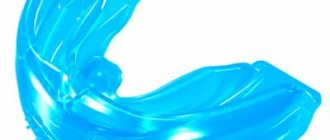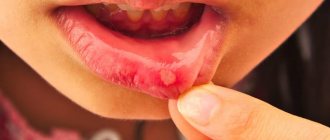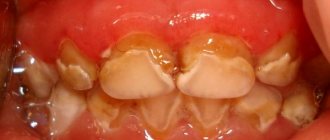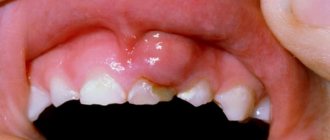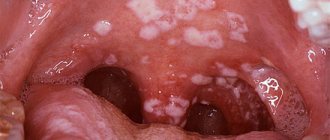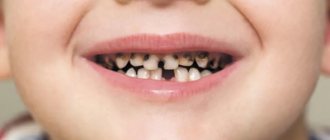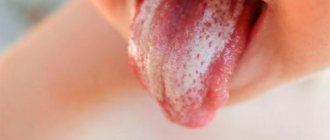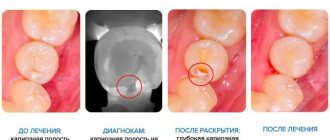Almost every adult whose childhood occurred at the end of the twentieth century has painful memories of visits to the dentist. For some, this has led to chronic neurosis, which occurs just at the thought of dental treatment. However, children living today do not have to endure the same difficulties. Modern dental clinics use the most effective methods of pain relief, including treatment during sleep, when the patient does not feel pain at all and does not even remember the procedure.
Features of anesthesia in children in dentistry
When treating a child, the primary role is played by his psycho-emotional state, so the choice of pain relief method is very important. If he is not psychologically prepared and is afraid, then even a simple procedure becomes a serious problem. Because of the baby’s anxiety and resistance, the doctor cannot concentrate, the parents become irritated and tired, and the time drags on with persuasion.
Problems of pain management in childhood:
- frequent development of allergies to local anesthetics;
- fear of medical instruments, including syringes, needles;
- many drugs are prohibited at an early age (up to 4 years);
- the anesthesiologist must clearly calculate the dosage.
If there are contraindications to anesthetics, the child cannot be persuaded or calmed down, then the procedures should be carried out only with the use of sedatives.
Otherwise, fear of the dentist can remain for life, interfere with maintaining the health of the dental system, and lead to tooth decay and loss.
Types of anesthesia in pediatric dentistry:
- local is the most common technique, which is usually carried out in two stages: first, an anesthetic spray or gel is used, and then an injection is given;
- general - carried out strictly according to indications;
- sedation - does not exclude the use of local anesthetics, but allows the child to relax.
The doctor chooses the type of anesthesia (drug, method of administration) only after a thorough diagnosis and exclusion of contraindications.
Preparation for anesthesia Sevoran
It is important to assess the readiness of the child’s body for treatment in medicated sleep. This requires research, which will be prescribed by the dentist-anesthesiologist at the first consultation:
- ECG - checking the heart function of a young patient.
- Blood tests - general and coagulation tests.
- Urinalysis - monitoring your current health.
- Consultation with an ENT doctor and pediatrician – if necessary.
The price of Sevoran anesthesia for dental treatment for children does not include additional examinations, but they are necessary. Aza&Buka dental doctors also recommend attending an adaptation appointment - introducing the child to the clinic, establishing a connection between the doctor and the patient, and gaining trust.
Local anesthesia
For most dental procedures, the use of local anesthetics is sufficient. Children usually tolerate freezing well, and modern drugs are safe and have minimal contraindications. Sensitivity of soft tissues is easily relieved with lidocaine, dicaine, benzocaine, bumecaine. The drugs are produced in different forms: water-based, oil-based solutions, in the form of gels, sprays, ointments.
Types of local anesthesia
Depending on the procedure, age, psychological mood of the child, pain relief is carried out using the application or injection method, as well as a combination of both.
Applications. Soft tissues in the treatment area are often treated with solutions, gels, and sprays based on lidocaine. The agents penetrate well into the mucous membranes and dull sensitivity. For some procedures, for example, removal of a loose baby tooth, an application is sufficient; in more complex cases, an additional injection is given.
Injections. The drugs are administered using a syringe. From the age of four you can use products with articaine, which are several times more powerful than novocaine anesthetics and are also safer. In pediatric dentistry, conduction (acts on the branch of the trigeminal nerve) or infiltration (reaches the endings of the dental nerves) anesthesia is usually performed. The second method is acceptable from the age of six.
Injection instruments
Classic syringes are gradually leaving children's clinics. Modern instruments make it possible to give injections less painfully and without psychological discomfort.
Through a needle-free injector, the drug enters the soft tissues under high pressure. Since there is no needle, the child does not experience strong fear.
In this case, the analgesic effect occurs faster due to the uniform distribution of the product.
The computer syringe also does not look like a regular one, so the injection is more comfortable. The dosage is controlled electronically, which allows saving on anesthetic, and the feeling of numbness after the injection is less pronounced.
A thinner needle is placed on the carpule syringe, which minimizes discomfort. The solution is contained in a sterile capsule to ensure precise dosing.
Advantages of the method
Reviews of the treatment of children under Sevoran are in most cases positive. Advantages of Sevoran:
- Painless. Sevoran is given through a mask and not intravenously.
- Speed of impact. The child falls asleep instantly.
- Controllability. The doctor can easily monitor the depth of anesthesia.
- No consequences. After recovery from anesthesia, discomfort is minimal.
- Safety. There is no negative effect on the children's body.
General anesthesia
Anesthesia is used in pediatric practice, but the procedure is performed only by an anesthesiologist with a preliminary examination of the child and the exclusion of contraindications. Anesthesia depresses the nervous system and can cause side effects, so it is used strictly according to indications and under medical supervision. The anesthesiologist must be highly qualified, since it is more difficult to calculate the exact dosage for a child than for an adult.
Types of anesthesia for treating children
In dentistry, two methods of general anesthesia are used:
Inhalation. A mask is put on the child and an anesthetic is given. After just a few breaths, he falls into a medicated sleep. This method is more gentle, since the dosage is easier to control during the process, and side effects are rare. Sevoran is considered the most effective and safe mask preparation today.
Intravenous. For young children, an intravenous catheter is installed and Diprivan or its analogues are administered. The dosage of the drug and the duration of drug-induced sleep are established by the anesthesiologist-resuscitator. Treatment must be coordinated with parents or other guardians.
How to prepare your baby for anesthesia
Preparing a child for treatment under anesthesia is a mandatory condition that should never be neglected. You will first need to undergo a series of tests, undergo an ECG, visit a therapist and other doctors (as directed) to obtain permission for general anesthesia. It is necessary to protect your child from colds, since if an infection develops, the date of the procedure will be postponed until complete recovery.
On the day of treatment, food is prohibited for at least six hours, and drinking for four hours. It is important to make sure that the baby does not eat anything behind his back, try to distract him, for example, with a walk, reading a book, etc. The day before, you need to feed the child light but nutritious food.
Indications and contraindications for the procedure
Traumatic dental procedures may require general anesthesia, but this decision depends not on the parents, but on the anesthesiologist.
In what cases is anesthesia justified or even necessary:
- complex operation, large amount of work;
- children under three years of age;
- allergy to local anesthetics;
- low pain threshold;
- Dentophobia (dentophobia) - insurmountable fear;
- pronounced gag reflex;
- a number of neurological or mental diseases.
The use of anesthesia is prohibited during periods of acute respiratory infections, in case of any infectious or inflammatory diseases of the respiratory tract, heart failure, heart defects, underweight, allergies to the drugs used.
Advantages and disadvantages
Treatment with anesthesia has many advantages:
- there is no psychological trauma, since the little patient falls asleep before the operation, and after waking up does not remember anything;
- absolutely painless;
- the doctor is focused on the procedure and is not distracted by the baby, which means medical errors are excluded;
- You can perform a large amount of work, including procedures of any complexity.
The disadvantages include the introduction of serious general medications into the body, which can cause negative reactions. After the procedure, the child remains lethargic for 6–8 hours and requires increased attention from medical staff and parents.
Is it dangerous to treat a child’s teeth under anesthesia?
General anesthesia in pediatric dentistry is not a whim of parents, but sometimes the only possible method of anesthesia. Temporary, as well as permanent teeth, must be treated, since infection and inflammatory processes in the oral cavity deplete the immune system, and premature loss of teeth leads to malocclusion. According to the law of the Russian Federation and a number of other countries, children under three years of age receive dental services only under anesthesia.
General anesthesia has long been safe, as it is carried out using non-toxic drugs, under the supervision of an anesthesiologist-resuscitator and modern equipment. If a child is forced into a chair and treated, the harm will be more significant than the possible side effects. Sometimes after the procedures, children begin to suffer from enuresis, stuttering, dental phobia and other disorders.
What to expect after anesthesia
Temporary agitation of the child, dizziness, nausea, and vomiting are possible. The anesthesiologist will give detailed recommendations in the post-anesthesia observation room. You need to start drinking and feeding your baby no earlier than 1.5-2 hours after the end of treatment.
What cannot be a consequence of anesthesia?
Anesthesia does not cause diarrhea, fever, cramps, abdominal pain, runny nose, cough, or allergic reactions. If these symptoms occur in your child, you should consult with our pediatrician or anesthesiologist, as always in such situations.
Sedation is an alternative to general anesthesia
If anesthesia is contraindicated or inappropriate, but the child cannot be persuaded to undergo dental treatment, then sedation is used. It comes in two types: inhalation with nitrous oxide or intravenous with Propofol or Dexdor.
In the first case, the child inhales the vapors of “laughing gas” and relaxes, plunging into a pleasant state of half-asleep. He remains conscious and can hear and comply with the doctor's requests. This does not exclude local anesthesia. Nitrous oxide is harmless to the body. Its effect begins immediately after the gas is supplied and stops just as quickly. The procedure is performed on babies, older children and even adults.
Intravenous sedation can be superficial, moderate, or deep. This depends on the dosage of the drug. After the drug is administered, the child’s consciousness is not suppressed, as with anesthesia, but he does not respond to treatment, as he sleeps.
Monitoring the child's condition under Sevoran
Regardless of the duration of treatment, an anesthesiologist and a nurse anesthetist are always with the baby. They monitor the child’s well-being according to an expanded standard. The control zone includes:
- Heartbeat.
- Blood oxygen level.
- Arterial pressure.
- Body temperature.
As well as other indicators if necessary.
The difference between Sevoran and other types of anesthesia
Sevoran in dentistry for children is used as a stand-alone drug or the action of an anesthetic is combined with others. This is a variant of induction anesthesia necessary for the initial immersion in sleep, as well as independent anesthesia.
Sevoran differs from other species:
- Submission is a mask anesthesia that does not require injections or IVs.
- Analgesic effect during sleep - however, the effect of Sevoran is combined with classical types of anesthesia, since after the gas is turned off, the anesthesia disappears.
- Fast acting - the child falls asleep within 5-7 minutes after the administration of anesthesia.
- Non-toxic - the drug is almost insoluble in the blood, quickly eliminated from the body, and as a result of metabolism, products that are safe for health are formed.
According to reviews, sevoran guarantees the absence of side effects during dental treatment.
Contraindications to general anesthesia
Under certain conditions, general anesthesia is contraindicated:
- with decompensated heart disease;
- for renal failure and liver diseases;
- with diabetes mellitus in the stage of decompensation;
- with severe forms of rickets;
- after the actual meal.
In case of increased bleeding and decreased blood clotting, before anesthesia, the patient should consult a hematologist and give the dentist permission to use this method for pain relief.
Preparing a child for treatment
Reviews of dental treatment for children near Sevoran indicate the importance of a positive attitude for the child before the appointment. But besides the mood, there are also medical recommendations:
- Avoid eating for 4-5 hours before treatment, but you can prepare juice, banana or something neutral for a snack after coming out of anesthesia.
- Contact with parents - the child comes into the office with mom or dad, tries on a gas mask, watches cartoons and calmly falls asleep. At the moment of awakening, the parents are also already nearby.
